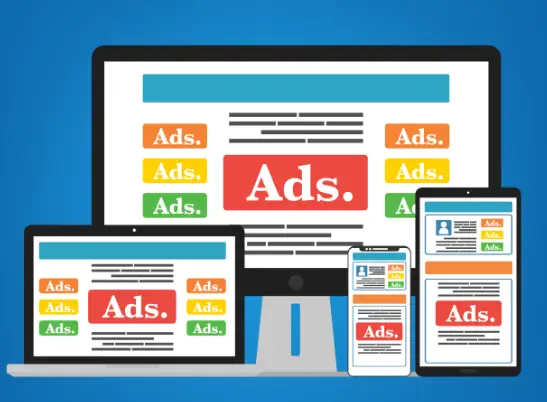Understanding Audience Targeting: The Key to Effective Marketing
In the ever-evolving landscape of digital marketing, audience targeting has emerged as a crucial strategy for businesses looking to maximize their advertising efforts. But what exactly is audience targeting, and how can it benefit your company? On this page, we’ll break down the concept of audience targeting, explore its various forms—including banner ads and display ads—and discuss the advantages and potential downsides of implementing this strategy.
What is Audience Targeting?
At its core, audience targeting refers to the practice of directing marketing efforts toward specific groups of consumers based on shared characteristics, behaviors, or interests. This approach allows businesses to tailor their messaging and advertising to connect with the intended audience, increasing the likelihood of engagement and conversion.
Audience targeting can take many forms, including demographic targeting (age, gender, income), geographic targeting (location-based), psychographic targeting (lifestyle and interests), and behavioral targeting (past online behavior). By understanding who your audience is, you can create more relevant and compelling marketing campaigns.
How is Audience Targeting Used?
Audience targeting is primarily used in digital advertising, where businesses can leverage data to reach specific consumer segments. One of the most common methods of audience targeting is through display ads or banner ads. These ads appear on websites, social media platforms, and apps, often tailored to the interests and behaviors of users.
For example, if a user frequently visits websites related to fitness, they may see ads for gym memberships or health supplements. This targeted approach not only enhances the user experience by showing relevant content but also increases the chances of conversion for advertisers.
Benefits of Audience Targeting
1. Low Entry Point for Budget
One of the most significant advantages of audience targeting is its accessibility for businesses of all sizes. With digital advertising, companies can set budgets that align with their financial capabilities. This means that even small businesses can compete with larger corporations by strategically targeting their audience without breaking the bank.
2. Enhanced Precision and Relevance
Audience targeting allows businesses to zero in on specific consumer segments, ensuring that their marketing messages are relevant to the people who are most likely to engage with them. This precision not only improves the effectiveness of campaigns but also reduces wasted ad spend on audiences that are unlikely to convert.
3. Ability to Track Response Data
Another key benefit of audience targeting is the ability to track and analyze response data. We know, nothing gets you more excited than to sit down at your computer for a long fun day of data analysis! Don’t worry, Great Lakes Media and Digital Marketing loves that stuff, we got this! Digital platforms provide robust analytics tools that allow businesses to monitor the performance of their ads in real-time. This data can include metrics such as click-through rates, conversion rates, and user engagement levels. By analyzing this information, companies can make data-driven decisions to optimize their campaigns and improve future targeting efforts.
4. Improved ROI
By reaching the right audience with tailored messaging, businesses can significantly improve their return on investment (ROI). When ads are shown to individuals who are genuinely interested in the product or service, the likelihood of conversion increases, leading to higher sales and revenue.
Downsides of Audience Targeting
While audience targeting offers numerous benefits, it’s essential to acknowledge some potential downsides.
1. Over-Saturation
One risk of audience targeting is the potential for over-saturation. If a user sees the same ad repeatedly, it can lead to ad fatigue, where they become desensitized to the message. This can result in diminishing returns on ad spend and a negative perception of the brand. (and this is all the time, not just in political season!)
2. Privacy Concerns
As audience targeting relies heavily on data collection, privacy concerns have become increasingly prominent. Consumers are becoming more aware of how their data is used, and businesses must navigate these concerns carefully. Transparency and ethical data practices are crucial to maintaining consumer trust.
3. Complexity of Implementation
For businesses new to digital marketing, implementing audience targeting can be complex. Understanding the various targeting options, setting up campaigns, and analyzing data requires a certain level of expertise. Companies may need to invest in training or hire professionals to manage their campaigns effectively. (hey, this means us! aw shucks, you’re embarrassing me!)
Conclusion
In summary, audience targeting—particularly through audience targeted display ads—is a powerful tool for businesses looking to enhance their marketing efforts. By focusing on specific consumer segments, companies can create more relevant and effective campaigns that drive engagement and conversions. While there are some downsides to consider, the benefits of audience targeting, including budget accessibility, precision, and the ability to track response data, make it a worthwhile strategy for businesses of all sizes.
At the end of the day, understanding and implementing audience targeting is not just about selling; it’s about teaching businesses how to connect with their audience in meaningful ways. By leveraging this strategy, companies can navigate the digital marketing landscape with confidence and success.
Real World Teaching Explanation Ahead!
Let’s say you wanted to target one of our company founders as your target market. You would start by selecting some of the available demographic information that is important to you about him:
- Hes approaching 50 years old
- White Male
- Is within 20 miles of your business or service area
- Likes sports
- Has a receding hairline (this is not actually a data point that we use, we just like to remind him of it!)
Through all of the online data that is collected about us as users, unless you take the time to really filter that information out and be honest – you don’t, websites are able to identify who meets that profile and if the website they are currently visiting is one that should show your ad to him.

All those places in the picture above are options for your ad to show up! That’s why when we do your campaign we ask for several different size ads to be created because you never know when the opportunity to be placed will open up and you want to have an option to fill the location when asked to do so! This takes place instantaneously through a bid process that we could teach you about but it’s incredibly technical. We just like to picture your ad sitting there raising it’s little paddle placing a bid. You just did it too! Adorable, right?
Why We Like Audience Targeting
If you know the audience profile really well you can 100% target them with a great deal of high impact and interaction. Plus, there are millions of websites that meet every profile imaginable out there so you are nearly always guaranteed to put your ads in a spot that meets your preferred client or customer. And those targets are growing every day. Not sure if you noticed but the internet is always expanding. It’s like space, but we aren’t kicking many people off the internet. Sorry, Pluto. We miss you!
To learn more about placing a campaign based on general audience targeting let’s talk. Contact us and we will get started!


